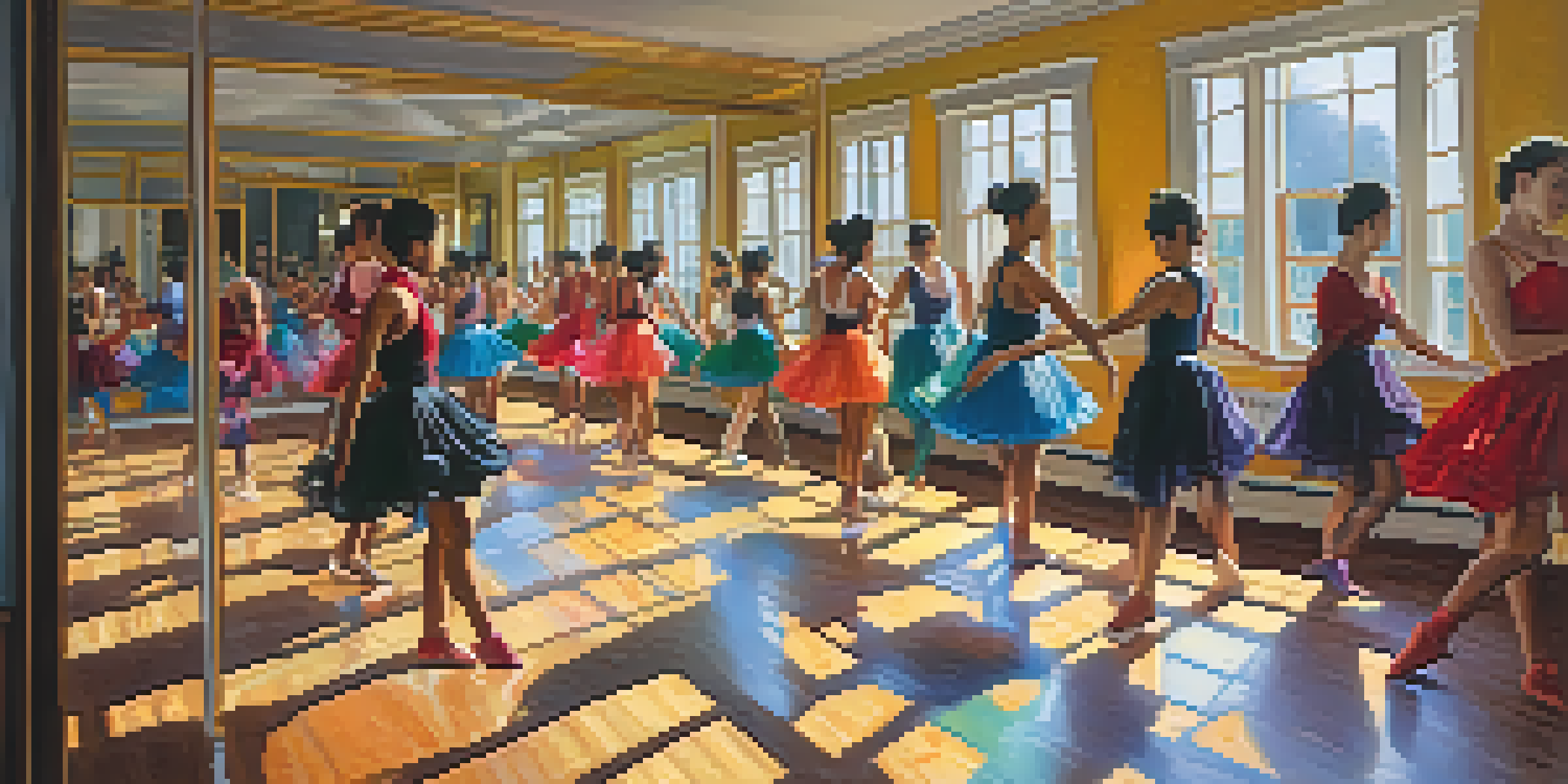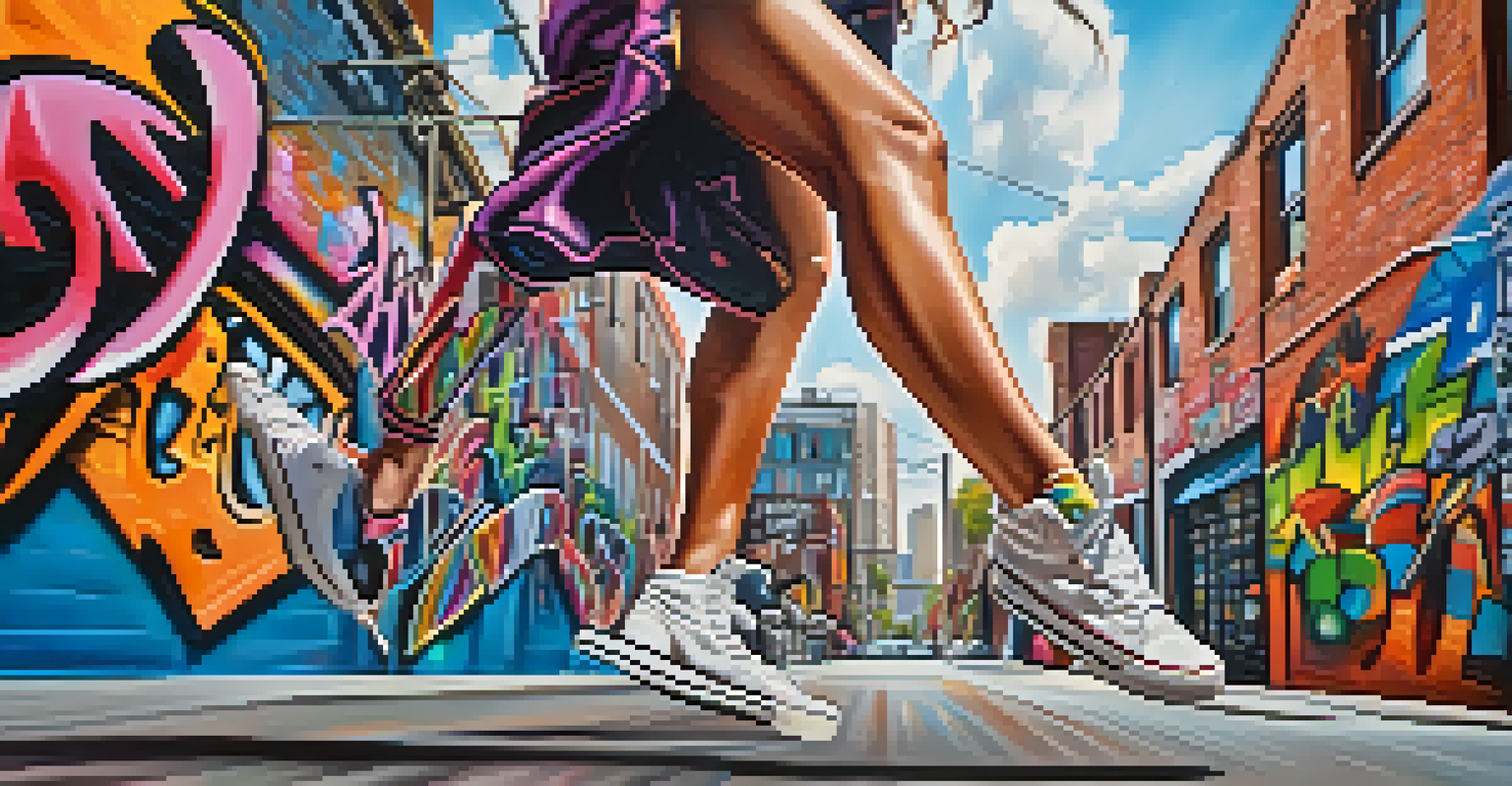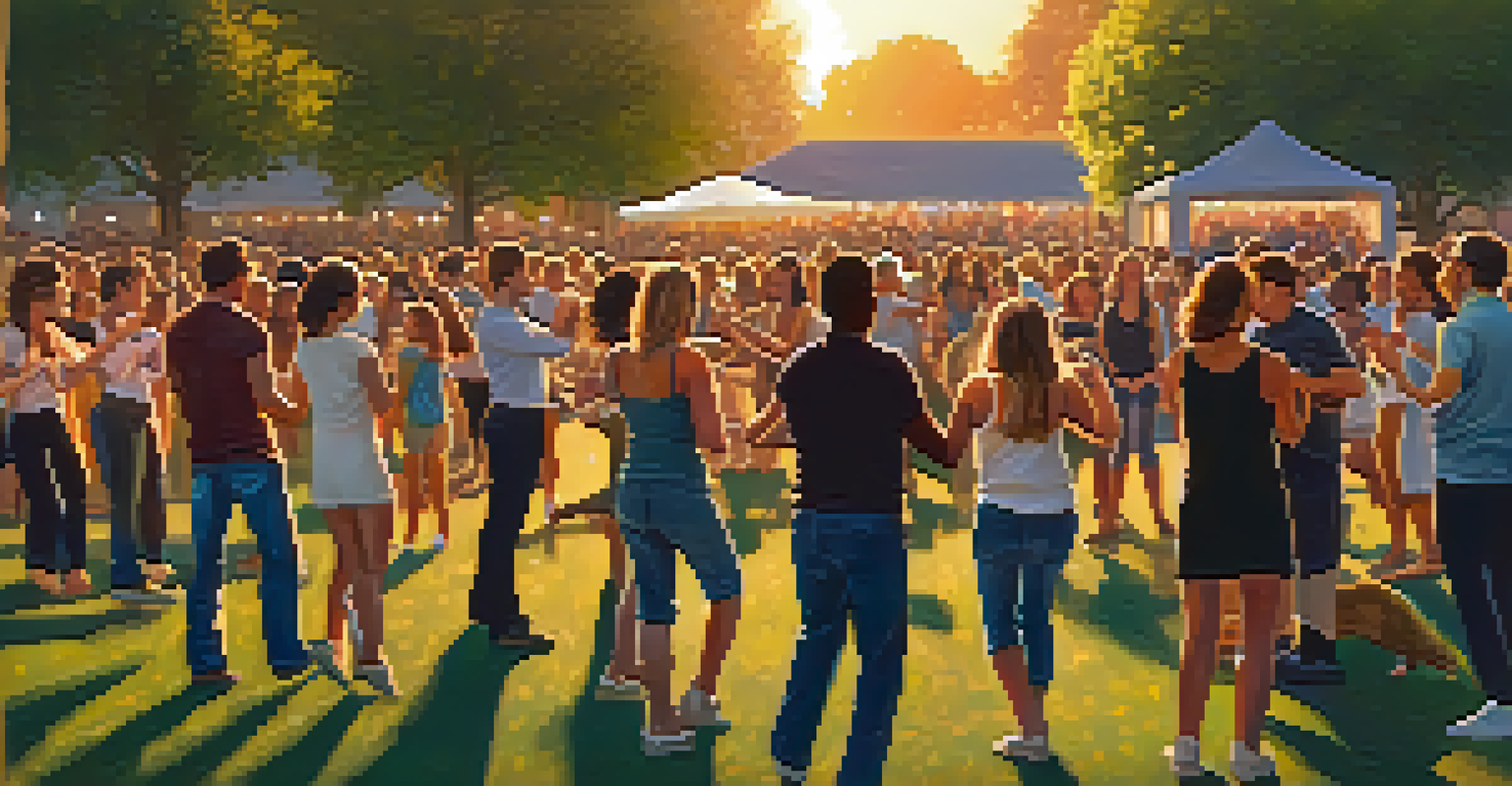The Impact of Social Media on Dance Critique and Trends

The Rise of Social Media in the Dance Community
Social media has revolutionized how dancers and enthusiasts connect. Platforms like Instagram and TikTok have become vital spaces for sharing choreography and performances. This shift has democratized dance, allowing voices from diverse backgrounds to be heard and appreciated.
Social media has become a powerful tool for dancers, allowing them to share their art with a global audience and redefine community.
Dancers no longer rely solely on traditional outlets like television or live performances to showcase their talent. Instead, they can post a dance video and reach thousands, if not millions, of viewers instantly. This immediate feedback can be exhilarating, but it also places pressure on dancers to continuously produce content.
As a result, social media acts as a double-edged sword—while it offers visibility, it can also lead to burnout. Dancers must find a balance between artistic expression and the demands of maintaining a social media presence.
Shaping Dance Trends Through Viral Content
Viral dance challenges have become a hallmark of social media, influencing what styles gain popularity. For example, the 'Renegade' dance, created by Jalaiah Harmon, took the internet by storm, showcasing how a single creation can spark a worldwide trend.

These challenges often blend various genres, encouraging dancers to experiment and innovate. As a result, we see a fusion of styles that pushes the boundaries of traditional dance forms. This evolution not only captivates audiences but also inspires dancers to expand their own skills.
Social Media Empowers Dancers
Platforms like Instagram and TikTok allow dancers to showcase their talents and connect with diverse audiences instantly.
However, the rapid pace of trend cycles can lead to fleeting popularity. Dancers may feel pressured to constantly adapt to the latest craze, which can dilute their unique artistic voice.
Audience Engagement and Feedback Loops
Social media has transformed the way audiences interact with dance. Viewers can now comment, share, and react to performances in real-time, creating a dynamic feedback loop. This interaction can validate dancers' efforts or provide constructive criticism, depending on the audience's response.
Dance is the hidden language of the soul, and social media gives it a voice that can be heard around the world.
Moreover, the immediacy of social media allows dancers to gauge public sentiment instantly. They can adjust their style or performance based on what resonates with their followers, leading to a more audience-centric approach to dance.
However, this can also lead to a reliance on popularity metrics, where dancers prioritize likes and shares over authentic expression. Striking a balance between audience engagement and personal artistry is crucial for long-term growth.
Influencer Culture and Its Effects on Dance
The rise of dance influencers has introduced a new layer to the critique landscape. Dancers with large followings can shape trends and set standards, often influencing what is deemed 'successful' in the dance community. This has led to the emergence of a new elite within the dance world.
While these influencers can inspire and elevate dance, they also create a competitive atmosphere. Aspiring dancers may feel overshadowed, believing they must conform to certain aesthetics or styles to gain attention.
Viral Trends Shape Dance Styles
Viral dance challenges encourage innovation but can pressure dancers to conform, risking their unique artistry.
It's essential to recognize the impact these influencers have on the dance narrative. While they can serve as role models, dancers should also celebrate their unique perspectives and contributions to the art form.
Critique in the Age of Social Media
Dance critique has evolved significantly with the advent of social media. Traditional reviews by experts are now complemented by audience reactions, which can often be more immediate and accessible. This shift allows for a broader range of opinions but can also lead to a lack of depth in critique.
Many dancers now face critiques from casual viewers who may not have a background in dance. While this democratizes feedback, it can also lead to misunderstandings of choreography or performance nuances. Dancers must navigate these layers of critique while staying true to their artistry.
In this environment, constructive criticism becomes essential. Dancers can benefit from thoughtful feedback that helps them grow, rather than simply focusing on popularity or viral potential.
The Globalization of Dance Trends
Social media has enabled the globalization of dance trends, allowing styles from different cultures to intermingle. Dancers around the world can share their unique traditions and techniques, enriching the global dance landscape. This cross-pollination fosters appreciation for diverse forms of expression.
For instance, genres like K-pop have gained massive popularity outside of Korea, influencing dance styles internationally. Such trends encourage dancers to learn from one another, creating a rich tapestry of movement that transcends borders.
Globalization and Cultural Sensitivity
The internet enables cross-cultural dance exchange, but dancers must navigate issues of authenticity and appropriation.
However, this globalization also raises questions about cultural appropriation. Dancers must navigate these waters carefully, respecting the origins of the styles they adopt and ensuring they represent them authentically.
Future Trends: Where is Dance Headed?
As social media continues to evolve, so too will its impact on dance. Emerging technologies, like virtual reality and augmented reality, have the potential to create immersive dance experiences. These innovations could redefine how we engage with dance, making it even more interactive.
Additionally, trends in social media algorithms may influence the visibility of dance content. Dancers might need to adapt their strategies to remain relevant in a rapidly changing digital landscape. Understanding these shifts will be crucial for future success.

Ultimately, the future of dance in the social media era is bright. By embracing change while staying true to their artistic roots, dancers can continue to thrive in an ever-evolving environment.